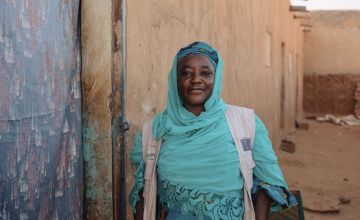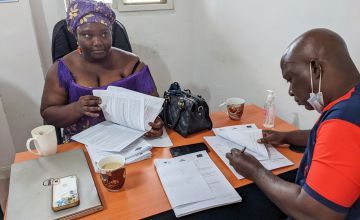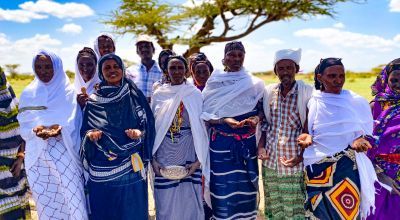
Knowledge Hub
The idea of equal pay seems straightforward: men and women should be eligible for identical remuneration for doing the same work. As we mark Equal Pay Day 2021, however, it is clear that women do not yet have that parity.
135.6 years to gender pay parity
A symptom of larger inequalities and discrimination, along the lines of race, ethnicity, and other demographic characteristics. As we strive to encourage legislative change to benefit women globally, it’s important to focus on the effects discrimination can have on lives worldwide.
The gender pay gap isn’t the same as unequal pay. The latter refers to women paid less than men for doing the exact same work: a man and a woman hold the same job title, with the man taking home a higher amount. While this certainly does happen, a more representative figure is the gender pay gap, which calculates the median earnings of women relative to men.
In a recent report by the World Economic Forum, it was revealed that on its current trajectory, it will now take 135.6 years to close the gender gap worldwide. Measured against four key dimensions (economic participation and opportunity, educational attainment, health and survival, and political empowerment) across 156 countries, the index showed that the average distance to complete parity was down 0.6% on last year. Most notably, these projections show that gender gaps in the labour force have widened since the outbreak of the pandemic, and the economic gender gap may therefore be between 1% and 4% wider than reported. While these are worrying statistics, they do give a glimmer of hope – and show that there’s still a strong chance of recovery.

The fraught state of labour force participation
The UN’s Gender Inequality Index (GII) paints a similar picture, with women in countries like Norway and Iceland at the top of the list seeing starkly outcomes to those in Niger and the Central African Republic (CAR) at the bottom. In Norway, around 60.4% of women are a part of the workforce, as are 67.2% of men, a 7% gap compared with a gap of 23.1% in Niger, at the bottom of the list. While 80% of both men and women in Iceland have received secondary education, in CAR the figure is 31.3% for men and a dire 13.4% for women.
There is a clear economic reason for gender equality – including increased labour participation and women earning the same as men in the workplace – it’s thought that gender equality would enrich the global economy by an estimated $160tn (£120tn). But at the current rate, this won’t be reached until the year 2156.



Women on the ‘sticky floor’
Around 40% of the gender pay gap can be attributed to the ‘sticky floor’ according to the Organisation for Economic Co-operation and Development (OECD): meaning social norms, gender stereotyping and discrimination are directly causing the disparity. Casual sexism, which starts in the classroom, can translate to real-world financial harm. Electing to take jobs with non-wage benefits - like proximity to home, and flexible scheduling - are often manifestations of the other roles women are expected to play in society (mother; caregiver) - and can directly lead to lower pay.
Disruption to a working life, whether because of parental leave, or other family responsibilities, often results in women missing out on promotions. Compounded with conscious and unconscious bias about women in the workplace, the ‘sticky floor’ holds women back, making it extremely difficult to get ahead. If a woman breaks through and finds occupational success, the other 60% of the gap is attributable to ‘glass ceilings’, meaning senior roles are likely out of reach.
The gender pay gap doesn’t just affect boardrooms and workplaces in the Global North. As the statistics show, this is a worldwide phenomenon. Rife in the Global South, the difference between take-home pay for men and women show the real-world effects of stereotyping and gender-based discrimination. Significantly, these markers translate into almost every industry, including the most rural contexts, and women in business in emerging economies.
Challenging gender-based discrimination in the Global South

In Sub-Saharan Africa, for example, 31% of women with children experience a wage gap, while only 4% of those without do. In Côte D’Ivoire, the cacao industry is dominated by women, but they only received around 20% of the profits. However, change is afoot.
A recent BBC report showed how women in Côte D’Ivoire are demanding change: organising co-operatives, hosting training sessions, and creating grassroots support schemes. Rosine Bekoin, a local leader, remarks that she’s now “afraid of nothing because I know how to manage my money. I am stronger. I am a leader of many people now and know I can do things on my own.”
Likewise, Concern’s recent partnership with Sister Aid Liberia (SALI) has seen similar collaboration. Working alongside the female-led NGO, over 10,000 people in rural communities have been a part of education sessions that empower women and help them access savings and loans schemes to have financial independence.
Worldwide improvements and policy change
Recent policy changes globally have inspired that same sense of strength. In 2017, the UK government made it mandatory for all organisations to report their gender pay gap, meaning that relevant data is available to inform policy-makers. In the Global South, progress is evident, too: from economic participation in Burundi to educational opportunity in Zimbabwe, change is heading in the right direction.
Rwanda stands out for its progress towards gender equity- the country’s parliament has more female members than anywhere else in the world and it is only one of three countries with more women than men in their lower/single house. The nation has also closed its gender gap in labour-force participation and enrolment in primary education – a leading example of how countries can close the gender pay gap.
The World Economic Forum has recommended that in order to preserve these gains, governments should invest in the care sector and equitable access to care leave for men and women - a particularly significant inequality that has been highlighted by the pandemic.
An understanding of institutional and cultural discrimination - especially in the context of the workplace - needs to be legislated against, and women should be supported to join the labour force of emerging and established industries. As women demand policy change, and seize grassroots leadership positions, the gender pay gap will diminish, improving the lives of women and girls globally.
Join the Women of Concern community for the opportunity to hear from women at the forefront of creating change, on the frontlines and in some of the world’s poorest places.
Other ways to help
Donate now
Give a one-off, or a monthly, donation today.
Join an event
From mountain trekking to marathon running, join us for one of our many exciting outdoor events!
Buy a gift
With an extensive range of alternative gifts, we have something to suit everybody.
Leave a gift in your will
Leave the world a better place with a life-changing legacy.
Become a corporate supporter
We partner with a range of organisations that share our passion and the results have been fantastic.
Create your own fundraising event
Raise money for Concern by organising your own charity fundraising event.





